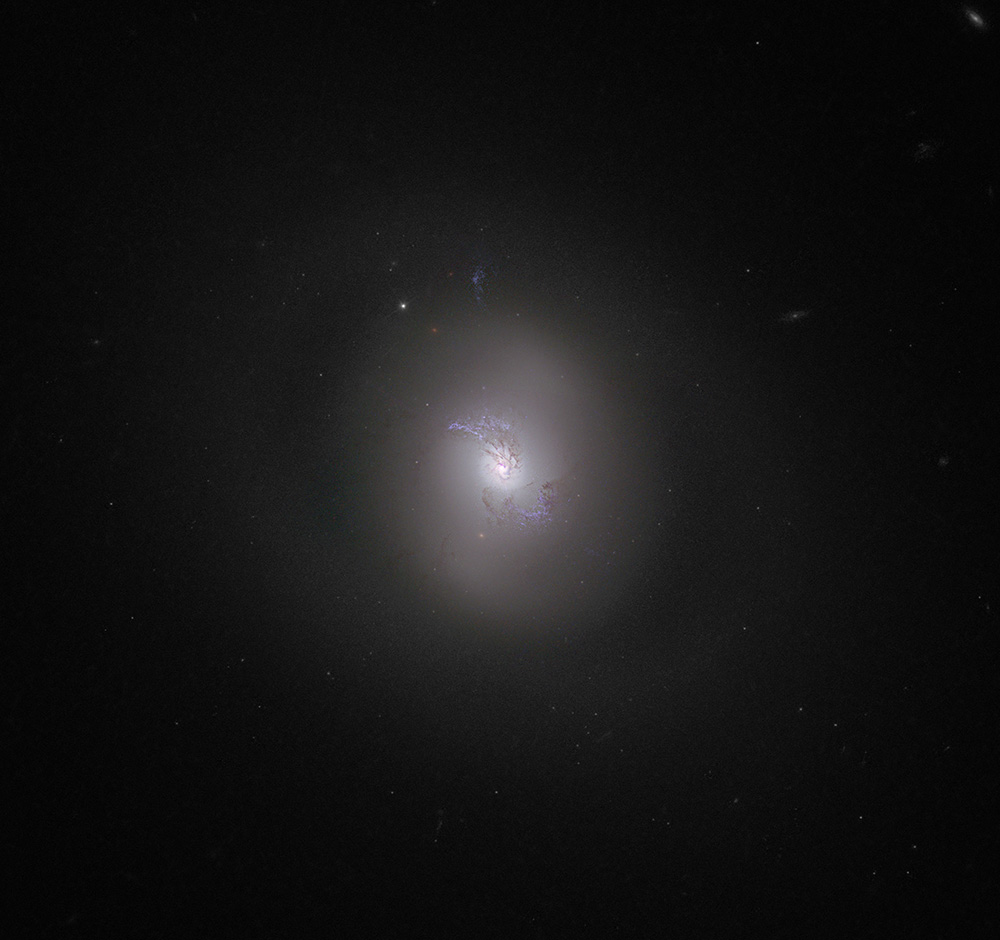
NGC 3516 (2014)
There are two reasons why this galaxy is interesting aside from the fact that it is one of those neat, geometric lenticular galaxies. First, as a Seyfert I type, it has an active nucleus. Rick Edelson has an easy to read article on that aspect and its variability here. If you want something harder to read, you might try X-ray Characteristics of NGC 3516: A View Through the Complex Absorber by T. J. Turner et al, which I think also mentions the second interesting thing which is easily seen in this picture. There are some blue clouds of gas to go along with those darker strands of dust near the nucleus.
I’ve learned that if you see something glowing blue in space, it’s probably doing that because of ionization. Given the crazy amounts of energy being output by the active nucleus, it’s not surprising that it happens, but I admit that it seems crazy that it is able to have this effect reach so far out from it. Anyway, I don’t understand it very well, so take my explanation with a grain of salt.
Smallish dots of light scattered around I presume to be globular clusters associated with the galaxy. They are conspicuous given how otherwise smooth the galaxy appears.
Note that though the blue clouds were only visible in the blue channel (F450W) they appear bright and almost white in my image. I did this to make them easier to discern. Anytime something is present only in the blue channel it tends to get lost against the background.
Another thing to note is that I aggressively sharpened the dust and these blue features. They are easy to see in reality but increasing their contrast allows us to see the fainter parts much more easily.
Furthermore, only the center of this image is in color as the nucleus was imaged in 1998 by Hubble’s WFPC2 as part of a study on barred bulges of lenticular galaxies. Later on, the whole galaxy was captured by Hubble’s WFC3/UVIS instrument in a subsequent study to measure the bulge luminosities of AGNs. Combining these two datasets, color can be generated for the center and the whole galaxy structure can be included in black and white which is ok because there really is not a lot of color away from the nucleus, anyway.
Red: hst_06633_07_wfpc2_f814w_pc_sci
Green: WFC3 / UVIS F547M (ib5e02010_drz)
Blue: hst_06633_07_wfpc2_f450w_pc_sci
North is up.
Copyright information:
Hubble data is public domain, but I put a lot of work into combining it into beautiful color images. The minimal credit line should read: NASA / ESA / J. Schmidt

This work is licensed under a Creative Commons Attribution 3.0 Unported License.


